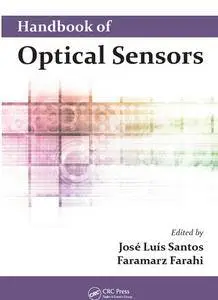"Handbook of Optical Sensors" ed. by José Luís Santos, Faramarz Farahi
F&T / CRC Press | 2015 | ISBN: 1439866864 9781439866863 | 706 pages | PDF | 11 MB
F&T / CRC Press | 2015 | ISBN: 1439866864 9781439866863 | 706 pages | PDF | 11 MB
This volume provides a comprehensive and integrated view of optical sensors, addressing the fundamentals, structures, technologies, applications, and future perspectives. This essential reference is an ideal resource for practitioners and those seeking optical solutions for their specific needs, as well as for students and investigators who are the intellectual driving force of optical sensing.
Optical sensors have wide-ranging applications in various fields including telecommunications, civil engineering, chemical industry, biomedical applications and the electrical power industry.
This comprehensive handbook, written by a wide spectrum of leading international researchers, offers a clear understanding of the theory as well as focusing on the many practical applications throughout the industry.
The book is organised into four main sections:
* Preliminary: Offers an overview of Fiber Optic Sensing Technology, the applications where it can be used successfully and also serves as an overall introduction to the handbook. This section also analyses current publications in the field.
* Fundamentals of Photonics and Components for Sensing: Describes the photonic concepts and components needed in order to carried out the understanding, the design, and to realise photonic sensor systems.
* Principles and Techniques for Sensing: Provides the principles and techniques in which the photonic sensing technology is based in order to understand how sensors work and how sensors can be made.
* Applications: An ample overview of the developments which are successfully taking place in laboratory and field trials, as well as the available sensors in the current market and the future trends in this field. Applications are featured throughout the text, and this section focuses primarily on niche applications.
This handbook would prove to be a valuable reference resource for researchers, engineers and postgraduate students in fibre optical sensing, as well as practising engineers in optical communications and electronic engineering, civil engineering, aerospace industry, biomedicine and robotics
Contents
Preface
1: Overview of Optical Sensing
2: Principles of Optical Metrology
3: Optical Waveguide Sensors
4: lntensity Measurements : Principles and Techniques
5: lnterferometric Measurement: Principles and Techniques
6: Fluorescence Measurement: Principles and Techniques
7: Surface Plasmon Measurement: Principles and Techniques
8: Adaptive Optics and Wavefront Sensing
9: Multiphoton Microscopy
10: Imaging Based on Optical Coherence Tomography
11: Fiber Sensing : A Historic Overview
12: Optical Fibers
13: Point Sensors : Intensity Sensors
14: Point Sensors : Interferometric Sensors
15: Fiber-Optic Sensor Multiplexing Principles
16: Distributed Fiber-Optic Sensors Based on Light Scattering in Optical Fibers
17: Fiber Bragg Grating Sensors
18: Optical Fiber Chemical Sensor Principles and Applications
19: lndustrial Fiber Strain Gauge Sensors
20: Standardization and Its Impact on Measurement Reliability
21: Optical Sensors : Final Thoughts
true PDF with TOC BookMarkLinks



